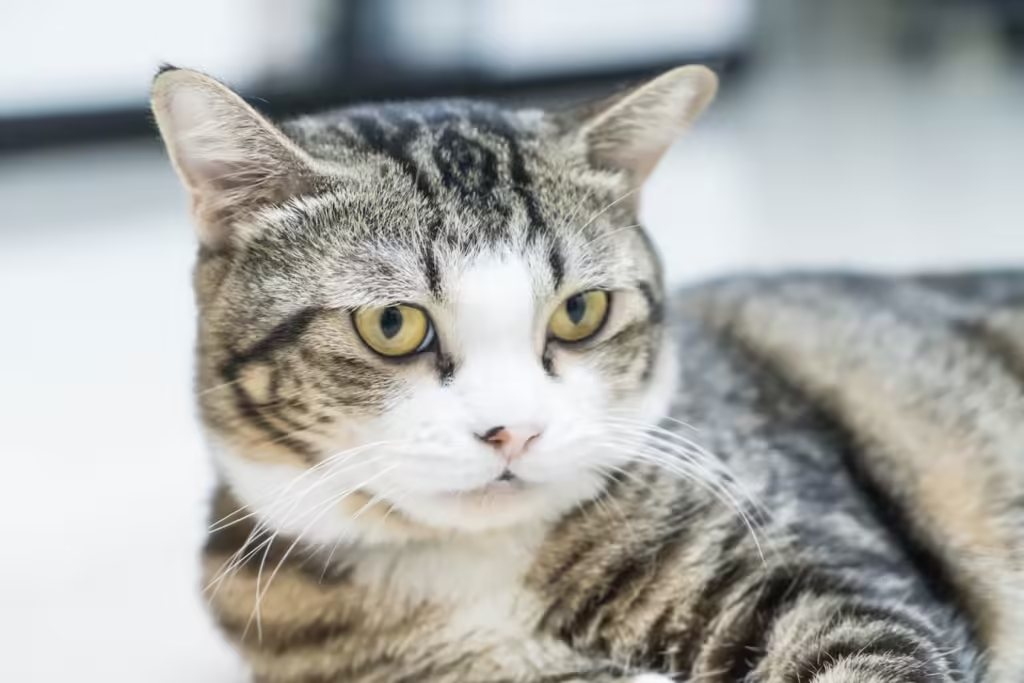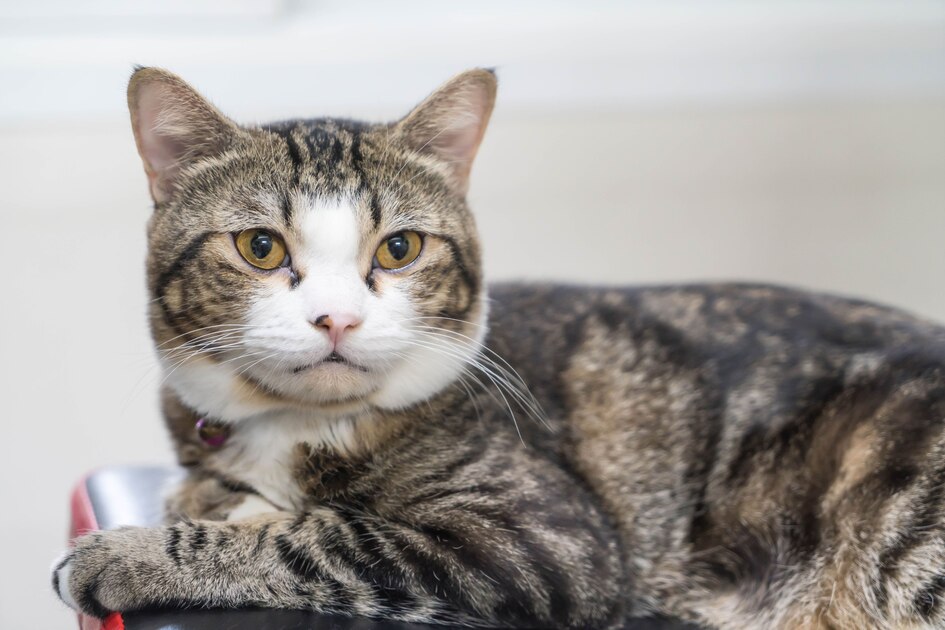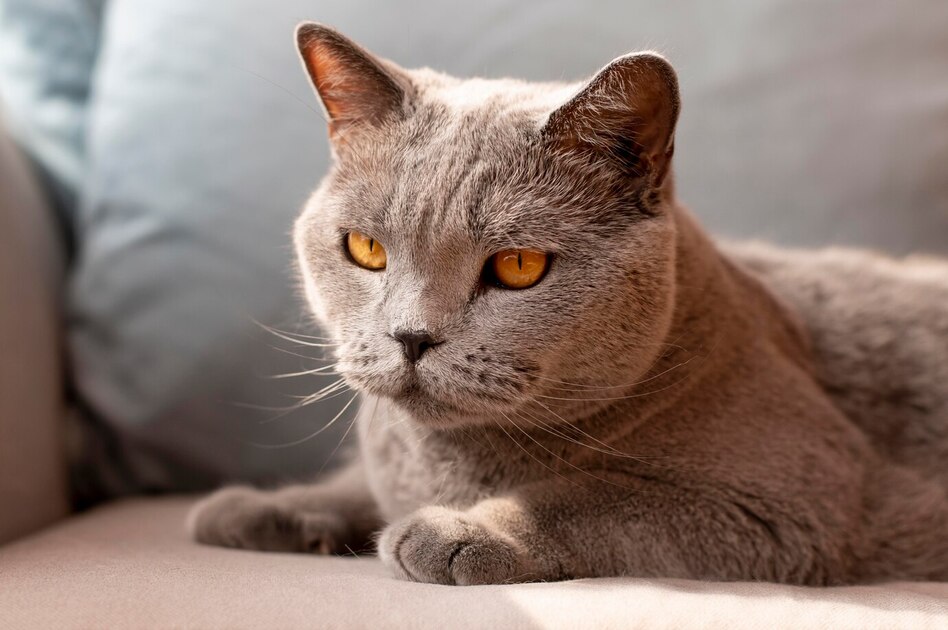Numerous domestic cat breeds exist, and they range in terms of size, form, and color. Oddly enough, the domestic shorthair cat is one of the most well-liked and uncomplicated cat breeds, having won over millions of hearts. You must be familiar with all of these terms—tomcat, house cat, and alley cat—because people occasionally use them to refer to this breed. However, what knowledge do you have of this hybrid breed? Some are large, some are little, and some are solid, some have stripes. But they are merely the seeming truths that are readily apparent. You might not be aware of these amazing facts about domestic shorthair cats. And in this post, we’ll demonstrate just that. Because of its mixed ancestry, the Domestic Shorthair cat generally avoids any uncommon health issues. Here are 11 amazing facts about domestic shorthair cats that you should not miss:
Also Read: Easy Steps to Caring for Your Maine Coon Cat
History of Domestic Cats
Studying the domestic shorthair’s past is akin to delving deeply into human history. For thousands of years, humans have mostly coexisted with cats. Domesticated cats were first brought to the world by early explorers, traders, and colonists, and they originated in Africa and Asia.
Over generations of interbreeding, these cats created a rich and varied gene pool that eventually gave rise to modern domestic shorthair cats. These cats were loved for their friendship and their ability to keep rodent populations under control—a quality that endures to this day.
Characteristics of Domestic Short Hair Cat
Although domestic shorthair cats can be found in almost any color and size, they are often large, muscular cats with a hearty build. They have rounded paws and a pronounced spherical head. Though they have a reputation for being healthy, this cat breed is voracious eaters. Therefore, their likelihood of becoming obese is considerable if they don’t manage their eating habits. Domestic shorthair cat must have been the classification given to Garfield.
They Adore Having Them at Home
Provided they live inside, domestic shorthairs are a long-lived and robust breed. They are low maintenance and get along well with kids and other household pets.
Numerous shelters are overrun with domestic shorthair cats as a result of this breed’s overpopulation. That being said, it’s not the main reason why people adore having them around. The domestic shorthair breed is unique, devoted, and healthful, which is the major reason for this.
On the Hunt
The majority of a typical domestic cat’s excursions are spent hunting outside the house. Appraised for their capacity to manage the rodent population on board the ship, this breed arrived in the United States on the Mayflower. Knowing that you are looking at a functioning cat that isn’t scared to take on any task at any moment when you encounter a domestic shorthair cat is important.
These breeds’ enjoyment of being outside makes sense. To prove to you that they have incredible hunting skills that you do not, do not be shocked if they bring some of their “prizes” home.
Domestic Shorthair Cat are Demanding Love
Funny, isn’t that right? That is, in fact, the case! It’s common knowledge that a domestic shorthair owns you rather than the other way around. Sincerely, is there a place in your heart reserved for cats? If so, you have likely been adopted at least once in your life by a domestic cat.
Unexpectedly, this small (or sometimes large) cat may show up at your door, meowing for food and wanting affection. That is because they are amiable and affectionate, and, lo and behold, they have chosen you to be their devoted owner. How do they compensate you in return? As long as you maintain them, they remain faithful and loving. How amazing!
Intelligent Cats
Due in large part to their natural breeding without human interference, domestic shorthair cats have a bigger genetic pool than other breeds of cats and are among the smartest animals. When their names are uttered, these incredibly bright cat breeds learn so quickly and react so quickly. That’s because their memory is as keen as a needle.
There was a time when the American shorthair and domestic shorthair were categorized as identical. It wasn’t until 1996 that the American Shorthair was placed under its breed classification. A purebred American shorthair and a domestic shorthair differ mostly in their morphological characteristics. A litter of kittens produced by an American shorthair has the same traits, temperament, and coat quality.

Varieties of Domestic Shorthair Cat
Domestic shorthair cats have a wide range of colors and patterns as a result of their mixed ancestry. Terms like “tabby” and “calico,” which merely refer to a cat’s markings, are probably familiar to you. They have nothing to do with the breed.
Thus, domestic shorthair cat breeds primarily consist of:
Home Short-Haired Tabby
The term “tabby cat” refers to domestic shorthair cats with pronounced capital M markings. The cat’s head striping converges to form the letter’s shape. A mackerel tabby wears a striped necklace on its chest, and its legs and tail have rings. Their torso’s stipe markings, which resemble a fish skeleton, are the source of the name. Some, on the other hand, have whorls that resemble the target but lack the fish pattern.
The ticked tabby is a different variety of tabby that lacks body striping but has striping on its feet, tail, and body. Their hairs have unique agouti or bands of color.
Domestic Shorthair Cat Calicos
With splotches of orange, brown, black, grey, and white throughout their coat, these domestic shorthair cats are multicolored. On the other hand, almost all calicos are female, which is an intriguing fun fact.
Tuxedo
A tuxedo cat’s feet, chest, and face are typically white, while their head, flanks, and back are frequently colored black. The tuxedo shorthair breed of cats is said to be smarter than other cat breeds.
Love to Exercise
You may be aware that cats have nearly twice as many hours of sleep deprivation as humans. However, never forget that these cats have a history of going for and catching rodents. It wasn’t so long ago that allowing cats inside the house became commonplace.
Despite their reputation for being quiet and submissive, Domestic Shorthair cats naturally need time for exploration and physical exercise. Providing exercise for these cats helps to develop their minds. To find out what games and toys your four-eyed companions like, try experimenting with different options. This breed occasionally tends to follow a laser pointer dot of light.

Different Temperament
Similar to how their colors and markings differ, so do their personalities in domestic short hair. Some will jump under the bed at the first sign of any person entering the house. There are also snuggly, purring bugs that greet and offer kindness to strangers. Nevertheless, most domestic shorthair cats make dependable and amiable friends, especially after living in human homes for millennia.
Physical Traits
Dimensions of the Body
The DSH often has a large to medium-sized, muscular, and proportionate body. Their paws are round, and they have strong legs. How big do domestic shorthair cats get? Well, they usually weigh 8 to 15 pounds, with males frequently weighing more than females.
Head of Domestic Shorthair Cat
Domestic Shorthair cats usually have rounded heads, but their wide genetic variance can result in some having faces that are slightly more angular or elongated. Particularly in men, they frequently have full cheekbones.
Eyes of Domestic Shorthair Cat
A DSH’s eyes may be its most alluring characteristic. They can be circular and come in a variety of colors, which frequently match the color of the cat’s coat. For example, cats with orange coats are more likely to have eyes the color of copper or deep gold, whereas white cats can have blue, green, or even one of each (heterochromia).
Colour and Coat
As the name implies, the coat is short, yet it can be slightly fluffy or very sleek and close to the body. The thick coat acts as insulation for the cat from a variety of weather conditions. The Domestic Shorthair is a veritable rainbow in terms of hues and patterns. They come in almost any color and pattern of cat that you could ever want, such as solid (black, white, blue, or red), tabby (mackerel, spotted, or classic), calico, tortoiseshell, and bi-color.
Take Good Care of Your Domestic Shorthair
Domestic shorthairs need little maintenance because of their short coat. Usually, a weekly brushing will keep their coat healthy and clear of stray hairs. They also have a reputation for being quite tidy, frequently taking great care of themselves.
Exercise is one thing indoor cats worry about. To keep them cognitively and physically occupied when they lack outdoor stimulation, you must provide toys, games, and interaction. One frequently asked question is, “How long do indoor domestic shorthair cats live?” An indoor domestic shorthair can live anywhere from 12 to 15 years, or even longer if given the right care and frequent veterinary examinations.
Read This: Tips for Training Your Russian Blue Cat

Major Problems
Overweight
Obesity is a major health issue for domestic shorthairs, particularly those kept inside. Overeating, inactivity, or both can cause this illness. Obesity can also lead to other health issues like diabetes, rheumatoid arthritis, and liver disease.
Dental Conditions of Domestic Shorthair Cat
Similar to other cat breeds and varieties, DSH cats are susceptible to dental issues such as periodontal disease, gingivitis, and tooth resorption. At-home dental care and routine dental examinations can help avert these problems.
Upper Respiratory Diseases
Although any cat can contract these diseases, cats living in multi-cat households or cats recently adopted from shelters may be more vulnerable. Sneezing, runny nose, and watery eyes are some of the symptoms.
Disorders of the Feline Lower Urinary Tract (FLUTD)
This is a general term for disorders of the urethra and bladder in cats. Urinary tract obstructions, bladder infections, and stones in the urine can all be part of it. Blockages, which pose a serious risk to life if left untreated, can particularly affect male cats.
Cardiovascular Disease
Hypertrophic cardiomyopathy, a condition where the heart muscles swell, is one of the cardiac disorders that certain DSH cats might get, albeit it is less prevalent than the previously described problems. Routine veterinarian examinations can help detect such illnesses early.
Infections by Parasites
Cats that interact with other animals or spend a lot of time outside could be at risk of contracting external parasites including ear mites, fleas, and ticks. Additionally, intracellular parasites like worms can infect them. Frequent preventive care and inspections can aid in warding off these pests.
Genetic Disorders
DSH cats are not completely immune to inherited diseases, even though their genetic variety lowers their risk compared to some purebred cats. Even though polycystic kidney disease and hip dysplasia are less common, some people may still be carriers or show symptoms of these disorders.
Cancers in Domestic Shorthair Cat
Cats, especially DSH, can get cancer, though it’s not as common as in some other pets. Check-ups regularly can help with early detection, which improves the likelihood of effective treatment.
Conclusion
Known for their tranquil, friendly, and loving nature, domestic shorthair cats are among the most well-liked breeds. However, domestic shorthairs are working-class dogs that enjoy hunting, which is another reason you should let them go outside and explore. To find out what games and toys your feline friends prefer, try a variety of options. Domestic shorthairs are especially smart and intelligent. Although they don’t speak out much, everyone knows them to be lovely and compassionate.
FAQs
A Domestic Shorthair cat is not a specific breed but a category of mixed-breed cats with short coats. They come in a wide variety of colors, patterns, and personalities. Their short, low-maintenance fur is one of their defining characteristics, which helps make them popular as pets.
Yes, Domestic Shorthairs are friendly. They tend to get along well with children and other pets, though individual personalities can vary. Their social and playful demeanor makes them great companions in diverse family environments.
Caring for a Domestic Shorthair is relatively straightforward. Regular brushing is usually not necessary due to their short coat, but occasional brushing can help reduce shedding. They should have a balanced diet, regular veterinary check-ups, and plenty of interactive playtime to keep them healthy and happy.
Domestic Shorthairs are generally robust and healthy cats due to their mixed heritage. However, like all cats, they can be prone to certain health issues, including obesity and dental problems. Regular vet visits and a proper diet are important to monitor and maintain their health.





Everything You Need to Know About Hobby Cats - catshobby.com
[…] cats, also known as “domestic cats” or “pet cats,” are one of the most popular and beloved pets worldwide. Their […]